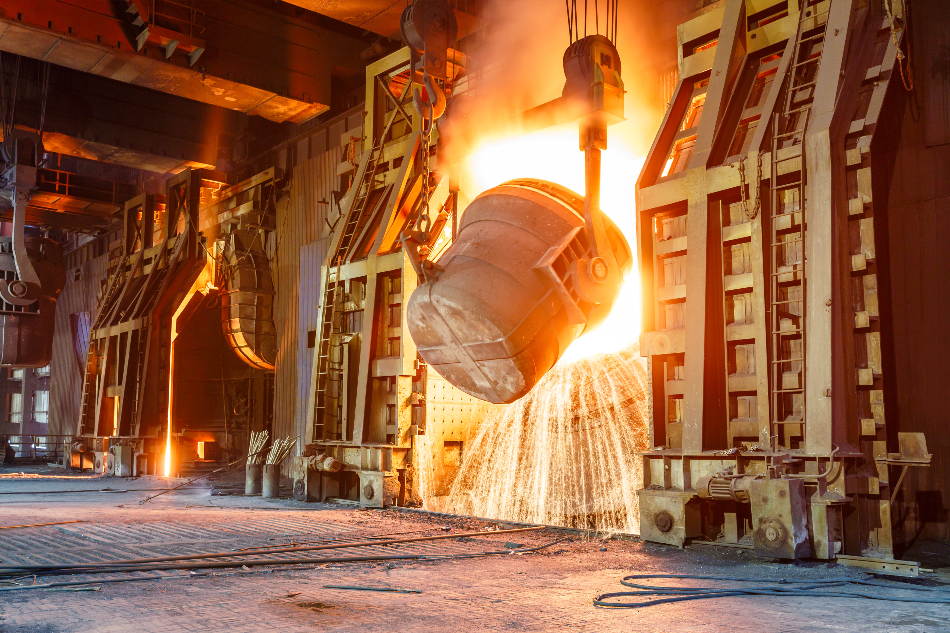
zhao jiankang / Shutterstock
High-temperature furnaces (HTFs) typically utilize electrical heating systems, advanced insulation materials, and innovative design to generate temperatures as high as 3000 °C, and are used for various applications in science and industry. In clean technology, they have an important role to play at numerous stages of clean energy production.
How do HTFs Work?
HTFs are a specialized type of industrial furnace defined by their ability to reach exceedingly high temperatures, usually between 1800 and 3000 °C. They generate such high temperatures electrically using either conduction, convection or blackbody radiation. HTFs are classed as muffle furnaces, as the material being heated is kept entirely separate from the electrical heating element. A typical HTF incorporates the following components and designs to reach the desired temperatures.
Chamber
This is where the subject material is kept. They can be front or top-loading and are usually manufactured from high-grade stainless steel which is electro-polished for durability. Double-walling the chamber helps to insulate against heat loss.
Hot Zone
Adjacent to the chamber material, the hot zone comprises the heating element and further insulation. Modern HTFs utilize fibrous graphite for its extremely high-temperature insulation properties.
Evacuation System
Many HTFs create a vacuum in the chamber to prevent convection heat loss and oxidation, to isolate gases in some applications, or to ensure the material is not contaminated. To maintain this, high-performance valves are required to remove air from the chamber. The evacuation system is also an important safety measure, enabling users to check the HTF for leakage.
Power Supply
This houses circuit breakers, contactors and power controls, as well as the main electrical supply to the heating element in the hot zone. Power supply instrumentation in HTFs can heat the element at a rate of 100 °C per second and must be able to operate at temperatures up to 3000 °C.
Control System
Modern HTFs are equipped with advanced control systems to precisely set the desired temperature, monitor vacuum levels and more. Thermocouples measure and control temperature up to around 1500 °C, while pyrometers are used above that temperature. User control is achieved through push-button panels, selector switches, and discrete controllers, or in more advanced systems through an HMI computer interface.
Water Manifold
Finally, the HTF’s water manifold uses water to cool the furnace and power cables once it is no longer in use.
Clean Energy Applications
This kind of furnace has numerous applications in the clean energy sector. From research and development to manufacturing, HTFs have an important role to play in clean technology.
Semiconductor Manufacturing
HTFs are used in multiple stages of the semiconductor manufacture process. Their high temperature ranges are perfect for annealing silicon wafers, essential for the doping process. Solid-state synthesis, an efficient method for creating semiconductor materials, is also performed in HTFs. Semiconductor materials are essential for clean energy, as they not only enable the processing ability that serves smart devices but are also used in renewable energy capture and storage. Further, high-performance light-emitting diodes (LEDs), which exploit semiconductor properties, can be manufactured effectively with HTFs.
Nuclear Energy
HTFs are used in the nuclear industry to create reliable, durable equipment for nuclear fuel and uranium enrichment used in cleaner power generation. HTFs can also be used to manufacture equipment for hot or cold cells meeting the strict standards necessary for nuclear energy generation.
Recycling Rare Metals
One of the downsides to many renewable energy solutions is their heavy reliance on rare metals, a finite resource. HTFs are used to recycle rare metals through smelting and cupellation, as well as to assess recycled materials.
Optimizing Coal Burning
As they are incredibly efficient, HTFs can be used to optimize solid fuel burning. As coal still provides for 30% of the planet’s energy needs, ensuring that when it is used, it is used as effectively as possible is still a clear priority for clean energy.
Materials Research and Development
HTFs can be custom-made for specific laboratory purposes. As such, they are an important tool for use in the research and development of new materials for the clean energy sector. New material research is vital for increasing the efficiency of clean energy generation, whether that be in nuclear, solar, wind or other forms.
Disclaimer: The views expressed here are those of the author expressed in their private capacity and do not necessarily represent the views of AZoM.com Limited T/A AZoNetwork the owner and operator of this website. This disclaimer forms part of the Terms and conditions of use of this website.